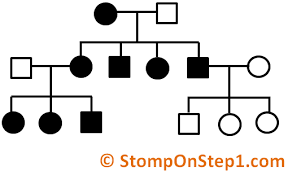Nonmendelian Genetics
Epistasis and gene interactions
- Epistasis - one gene modifies the expression of another gene (usually one gene blocking another)
- This will usually show up in questions involving pigmentation - one gene codes for the production of a pigment, another may block the laying down of this pigment (recall albino cat question - this affects phenotypic ratio!! don’t just accept 9:3:3:1 for these)
- ex) some chicken coloring is influenced by 2 genes, C and I
- C codes for a dark pigment production, c codes for no pigment production
- I inhibits pigment production, i does not
- A dihybrid cross will result in 13 white chickens and 3 dark chickens - only those with CCii or Ccii genotypes will lay down pigment
- If we had assumed independent assortment for this cross, a X^2 test would require rejecting of the null hypothesis - genes C and I do NOT assort independently of each other
- Epistasis can also include more subtle alterations rather than complete blockage, such as with horse coat color (chestnut, palomino, cremello)
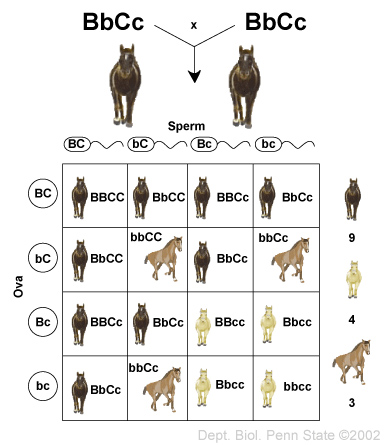
Sex-linked traits
- sex genotypes showing up frequently: XX(F) and XY(M) in most mammals, ZW(F) and ZZ(M or F) common in birds and reptiles
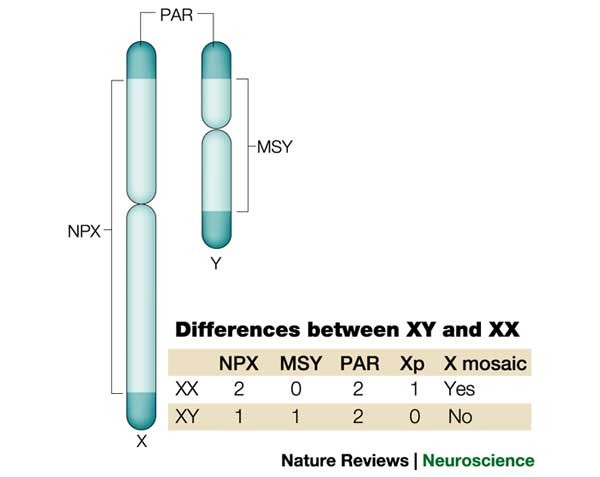
- X and Y chromosomes don’t share many common genes, so don’t typically cross over (recall that crossing over only involves swapping of different versions of the same gene)
- Crossing over on sex chromosomes usually leads to defects
- Law of segregation applies to whole chromosomes as well -- eggs will have 50/50 maternal or paternal X, sperm will have 50/50 maternal X and paternal Y → zygotes will be 50/50 XX and XY
Inheritance of X-linked traits
- Male offspring always inherit their X chromosome from their mother and Y from their father
- Males only have one X chromosome - they only need to inherit one recessive allele to express the recessive phenotype - this is why you’ll see disproportionate numbers of male offspring with recessive X-linked conditions
- Fathers pass down Y chromosomes to their sons - the son of a colorblind man will not be colorblind unless his mother also passes down a recessive allele
- \
- Daughters with an X-linked recessive condition (i.e. RG colorblindness) must inherit a recessive X-chromosome from both parents (a colorblind girl has to have a colorblind father)
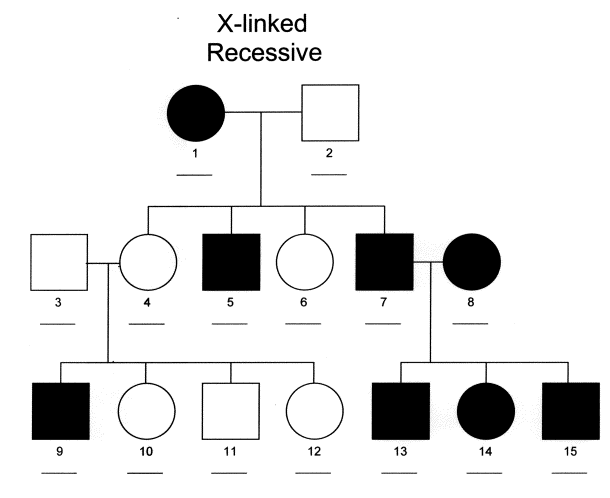
Y-linked gene inheritance
- This won’t show up often b/c there aren’t many genes on the Y chromosome
- Most genes on the Y affect male fertility or sex traits - mutations on the Y can cause infertility/low sperm ct
- Fathers transmit mutant alleles to sons only - all sons of affected fathers are also affected
- Daughters of affected fathers cannot inherit or transmit Y-linked genes, and affected females are impossible
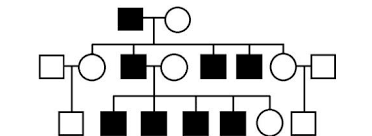
Linked Genes
- Genes located on the same chromosome do not assort independently of one another - typical ratios assuming this do not work
- This is why we often see combos like blue eyes/blond hai
- Genes become unlinked when recombination happens in between two genes
- Vast majority of progeny will have parental genotypes b/c there is a relatively low probability of recombination always
- Percent of progeny with recombined chromosomes depends on how close together the genes are on the chromosome - higher percent = farther apart, greater probability that chromosome will split/recombine somewhere between the two
- We can determine how close together genes are by tracking frequency of recombination - 1% corresponds to 1 map unit of distance between
- One entire chromosome is 50 map units → If frequency of recombination is greater than 50%, the genes are on separate chromosomes and independent assortment likely applies
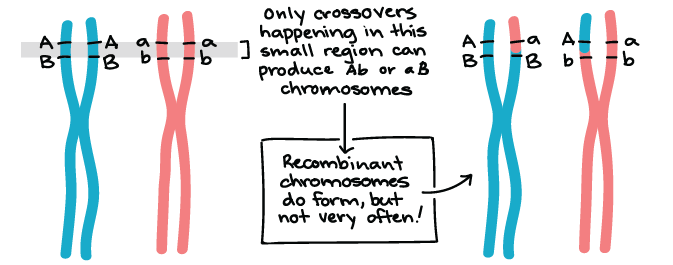
Mitochondrial and Chloroplast DNA
- DNA from mitochondria and chloroplasts is maternally inherited
- Recall differences in male/female meiosis - mature sperm only have enough mitochondria to power its movement into the egg, and these disintegrate when fertilization happens - the mitochondria that are in the zygote and then in the organism are from the egg, which contains all the vital organelles
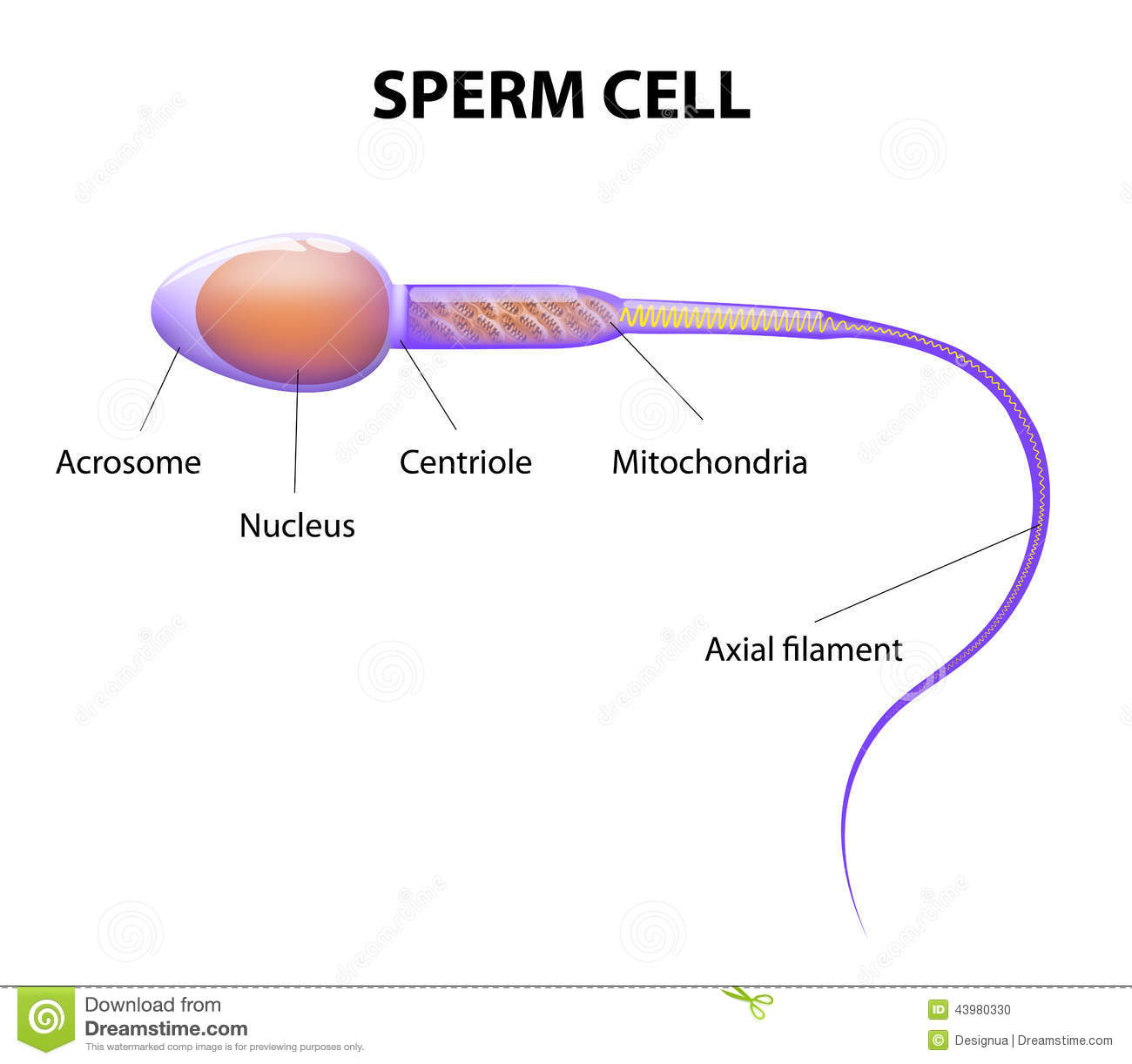
- exception: giant redwoods have paternal inheritance, some fern species have biparental inheritance - these patterns are very rare compared to maternal inheritance
- Mitochondrial diseases are also maternally inherited - all children of women affected by a mitochondrial disease will also be affected, even males
- But males cannot pass on mitochondrial diseases
